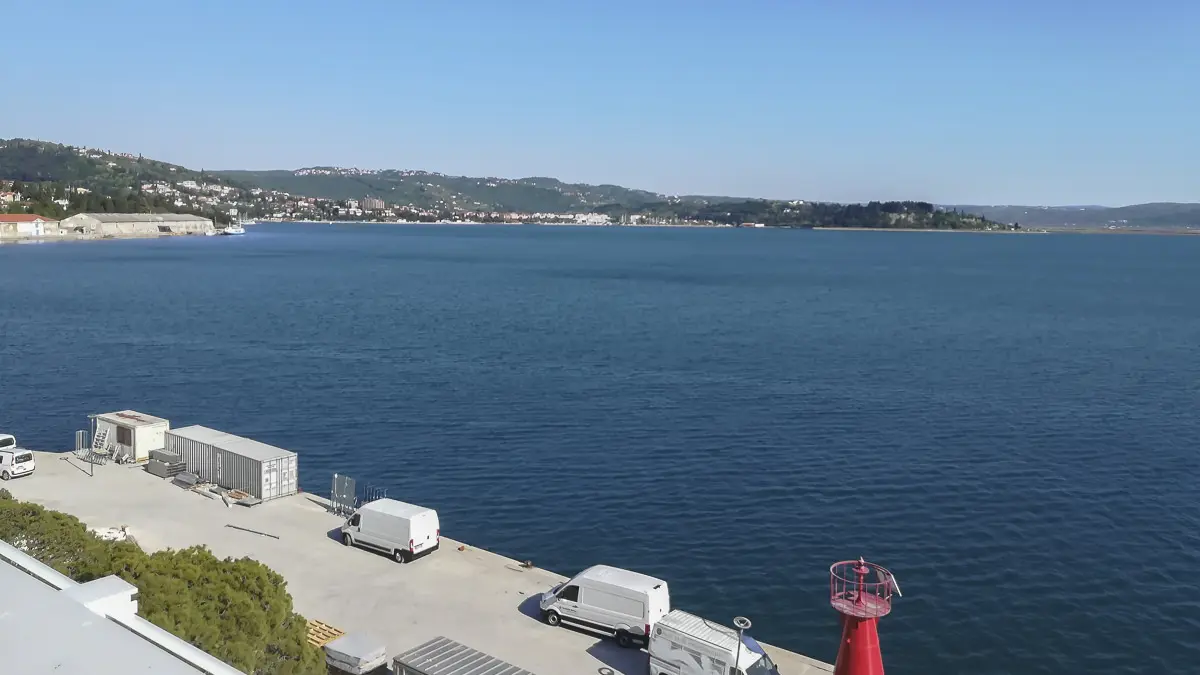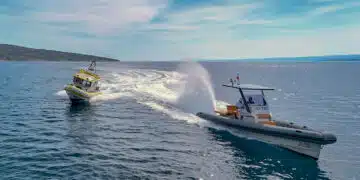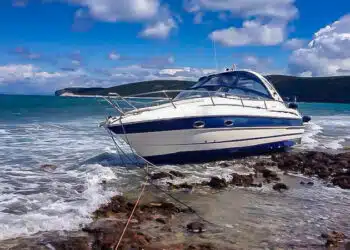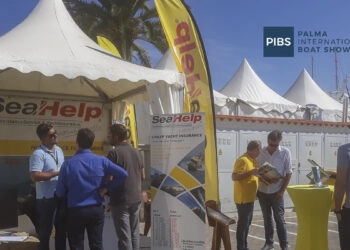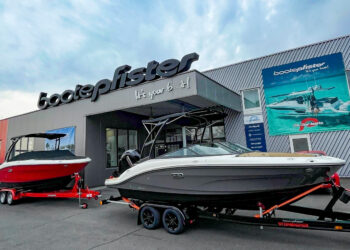Flap entry controls
A German businessman, who recently had to attend appointments in Slovenia that could not be postponed, describes the situation with a little astonishment. “When entering through the Karawanken tunnel, the roadway first becomes single-lane, then you are led into a tent-like covered area where control takes place. If one can even call it that way, as my passport was checked, I was asked about my destination and could continue my journey. No indication of possible quarantine on site, just the obligatory question about my state of health.”
Different handling
This meant that the hurdle of crossing the border in times of the coronavirus pandemic had already been overcome. In Slovenia itself, especially in the coastal region around Portoroz and Izola, it became clear how differently the country reacts to the COVID-19 dangers. “What I don’t understand is that park benches were partly covered with fluttering tape, but in the city centres the tables in the cafés and restaurants were well occupied, with no trace of compliance with the rules of distance and controls”.
Italian owners on their ships
And in the marinas? Upon request by phone, the Marina Portoroz tries to be normal: the owners ask for a crane, the service companies carry out the necessary repairs, but at the moment the orders are done by phone. In any case, the Marina Portoroz is preparing for the season and thinks that it can start soon. Even the small private fishing boats would go out to sea every evening. In the undertone there was a little bit of incomprehension why Germans and Austrians would not be with their boats long ago.
On a direct question: “Yes, three Italian owners have already been on their ships for a good two weeks”. Italian owners? When asked, they said that they had simply come and were already enjoying the peace and quiet. Quarantine is probably not the answer. Apart from that it was “business as usual” – except for the fact that there was nobody else in the Marina Portoroz.
SeaHelp base ready for the season

An inquiry at the SeaHelp base in Portoroz showed a similar picture. They said they were ready for the coming water sports season, but first of all the guests had to come. There is currently a lot of construction activity at the hotels, such as the Hotel Bernadin, where the opportunity is being taken to carry out renovation work when there are no guests.
Other requests have not been very successful. The Slovenian tourist office in Munich could not be reached by telephone, at the Slovenian embassy in Berlin one landed in nirvana of the multilingual answering machine without ever being able to speak a human voice, and at the Viennese representation of Slovenia, at least after longer attempts, a staff member answered, who referred in a friendly but firm manner to publications on the Internet.
We do not want to withhold these from our readers at this point:
Border between Italy and Slovenia
Crossing the land border from Italy to Slovenia (= entry into Slovenia) is only possible at the border crossing points, Vrtojba (00:00-24:00), Škofije (00:00-24:00), Fernetiči (00:00-24:00) and Krvavi Potok (05:00-23:00) and there only for the following group of persons:
(a) Slovenian nationals;
b) persons resident in Slovenia;
(c) other persons only if they hold a SARS CoV-2 negative certificate (COVID-19) in Slovenian, German or English language not older than three days. If the certificate cannot be presented, it may still be possible to cross the border, provided the body temperature is below 37.5 °C and there are no signs of respiratory infection (e.g. coughing, sneezing, shortness of breath).
All bus, rail and freight traffic between Italy and Slovenia has been interrupted since 12.03.2020. Excluded from this: Freight transport of medical supplies, equipment and humanitarian aid and postal freight transport. The closure of the border does not apply to freight transport with final destination in Slovenia.
Border between Slovenia and Croatia
On 18 March 2020 at 00:00, 27 border crossings with Croatia were closed. The measure is valid until revoked.
International rail and road border crossings remain open. Border crossing points (road): Sečovlje, Dragonja, Sočerga, Podgorje, Starod, Jelšane, Babno Polje, Petrina, Vinica, Metlika, Slovenska vas, Obrežje, Rigonce, Orešje, Bistrica ob Sotli, Imeno, Rogatec, Dobovec, Gruškovje, Zavrč, Ormož, Središče on Dravi, Gibina and Petišovci.
Persons entering Croatia from endangered areas must voluntarily quarantine themselves for 14 days.
Border between Slovenia and Austria
Crossing the land border from Austria to Slovenia is currently only possible at the following border crossing points: Gornja Radgona – Bad Radkersburg (00:00 – 24:00), Kuzma – Bonisdorf (00:00-24:00), Karavanke – Karawanken tunnel (00:00-24:00), Vič – Lavamund (05: 00-23:00), Ljubelj – Loibltunnel (05:00-21:00), Trate – Mureck (05:00-21:00), Radlje – Radlpass (05:00-21:00), Gederovci – Sicheldorf (00: 00-24: 00), Šentilj(motorway) – playing field (00:00-24: 00), Šentilj (railway station) – playing field (railway station) (00:00-24: 00), Holmec – Grablach (05. 00–08.00, 15.00–18.00).
Entry into Slovenia is not permitted for foreign persons wishing to continue their journey in transit through the territory of the Republic of Slovenia if exit from Slovenia is not possible due to measures taken by neighbouring countries.
The German Embassy in Ljubljana writes about this:
Slovenia is subject to a basic quarantine obligation upon entry. German citizens entering Slovenia must enter a 7 to 14 day quarantine at their home address in Slovenia immediately after entry. If the German citizen has no place of residence and no address in Slovenia, entry will be refused.
There is no quarantine obligation for persons who pass through Slovenia directly and by the shortest route and who are allowed to enter the neighbouring country (Croatia; Italy; Austria; Hungary).
The bottom line is as follows: Anyone entering Slovenia from Italy should prove that the body temperature is below 37.5 degrees when crossing the border. Guests from Germany and Austria may enter but should be placed in a 7-14-day quarantine. A transit is actually possible at any time Whether this is possible on your own ship, the official authorities in Slovenia did not want to comment on this. We recommend to contact the respective marina. However, the texts published in extracts are only a snapshot, up-to-date information can be found under the links listed below
Embassy of the Republic of Slovenia in Berlin
Update 25.4.2020:
A reader wrote to us that he had made a written request to the police station in Izola whether it was possible to spend the quarantine period on his yacht in the marina there. He was informed in writing by the police in Izola that this was not possible.


